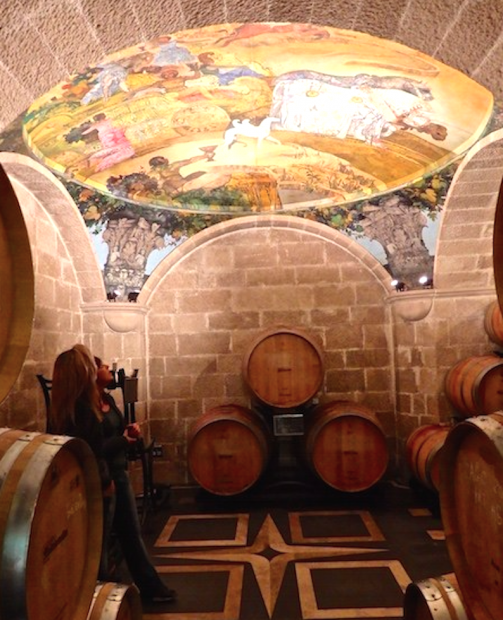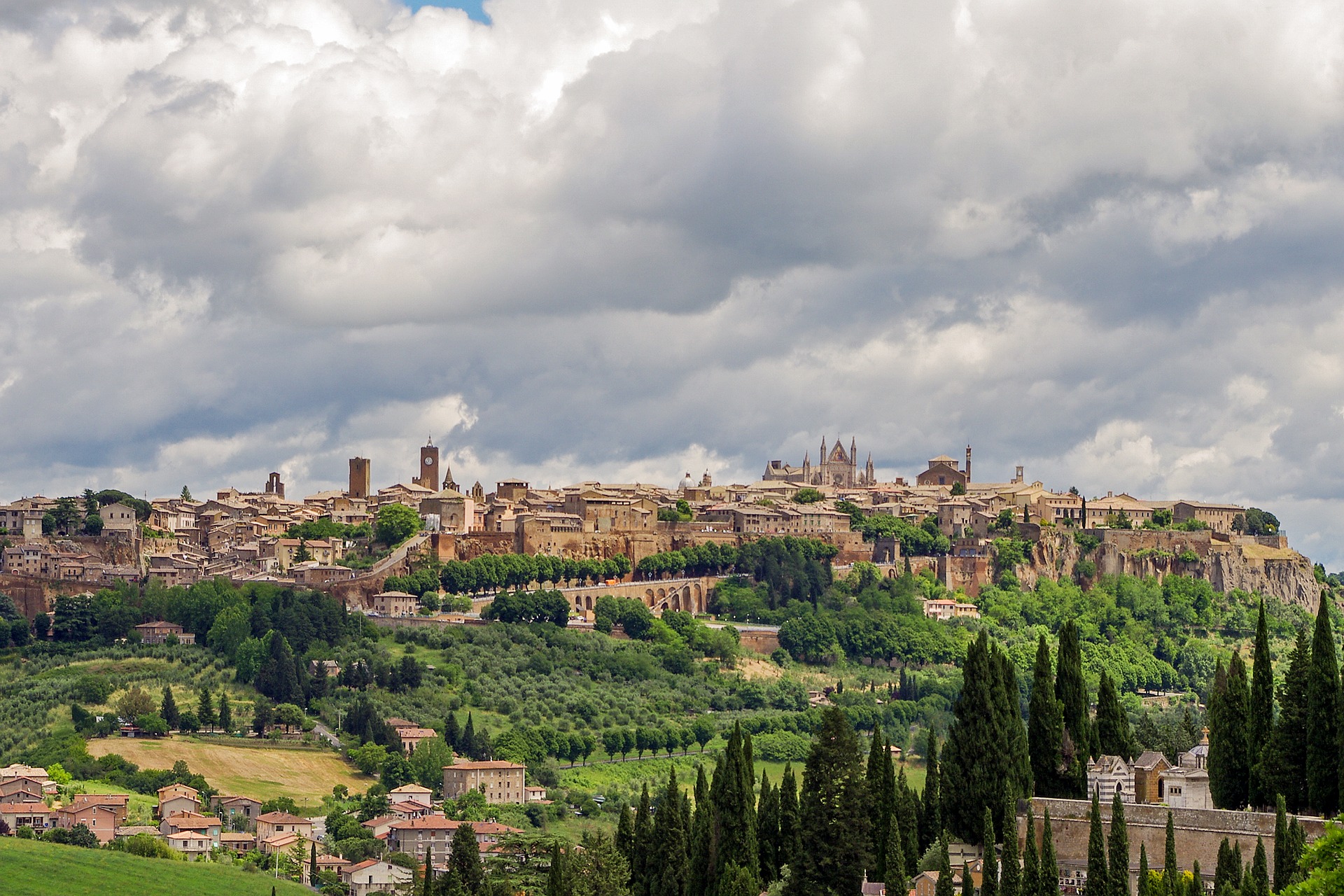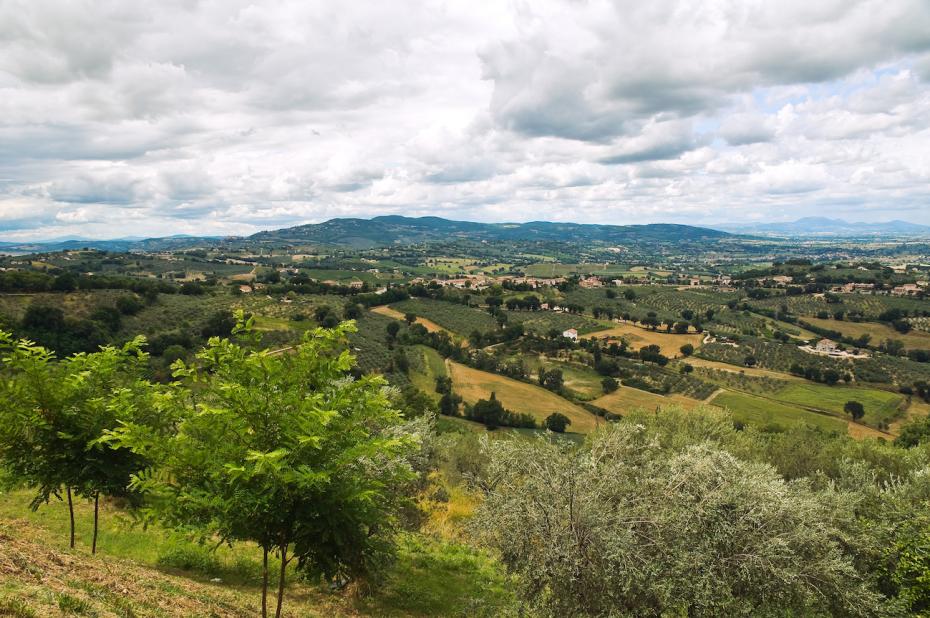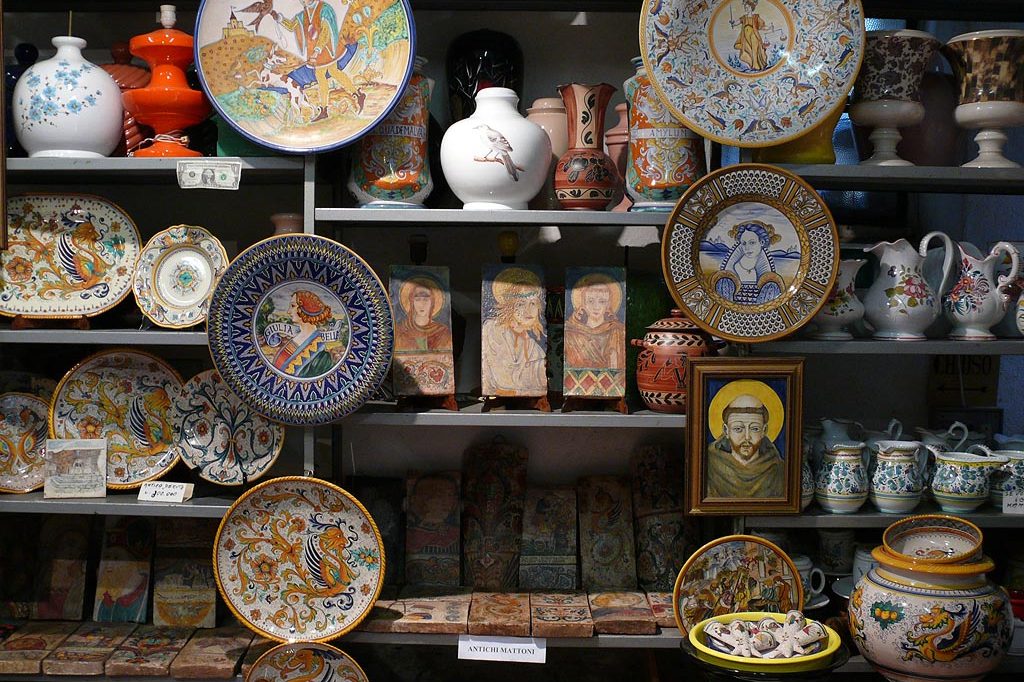Here the second part of Victoria’s visit at Mastrobernardino Wine.
Mastroberardino is the only winery that has been planting experimental vineyards using ancient traditions in several locations within Pompeii. The resulting grapes have been used in several of their bottlings. But it is not the same wine that the ancient Romans drank, which was nasty and had to be flavored with honey and other additions to make it drinkable. Thankfully, Mastroberardino winemakers remain committed to using contemporary wine making techniques.
Tucked away in the small town of Atripalda, just 40 km east of Naples, Mastroberardino is Campania’s most renowned winery. Inside, frescoes of mythological creatures grace the ceilings in the most vivid array of colors, fostering a strong feeling of this ancient land. The dynamic swirl of lyre-players, fauns and gods at the banquet of Bacchus captivate those who unleash their imaginations.
Established in the 1750’s by Pietro di Mastro Berardino, the winery is now owned and operate by Piero Mastroberardino, the tenth generation of the Mastroberardino family. Piero, who is said to be ‘an artist grounded in reality,’ is a professor of social sciences at the university in Foggia. He is an accomplished musician, author and painter. Piero is a man who proves very capable of running a successful wine estate.
There are at least six varietals that the Mastroberardino wineries grow, all of which have a very long history with the land. Among them are the Aglianico, Fiano, Piedirosso, Greco, Falanghina and Coda di Volpe. The Greeks introduced vines to Campania around 800 BC, making it one of the oldest grape-growing regions in Italy. Hence the names Greco, from the word Greek, and Aglianico, from hellenico (meaning Greek). Of the 300 grape varieties known to grow in Campania only 15 of them are being cultivated today.































